This will be a quick article, but I very much wanted to share some tremendous visuals, the shooting experience, and BTS from a bleeding edge aerial shoot.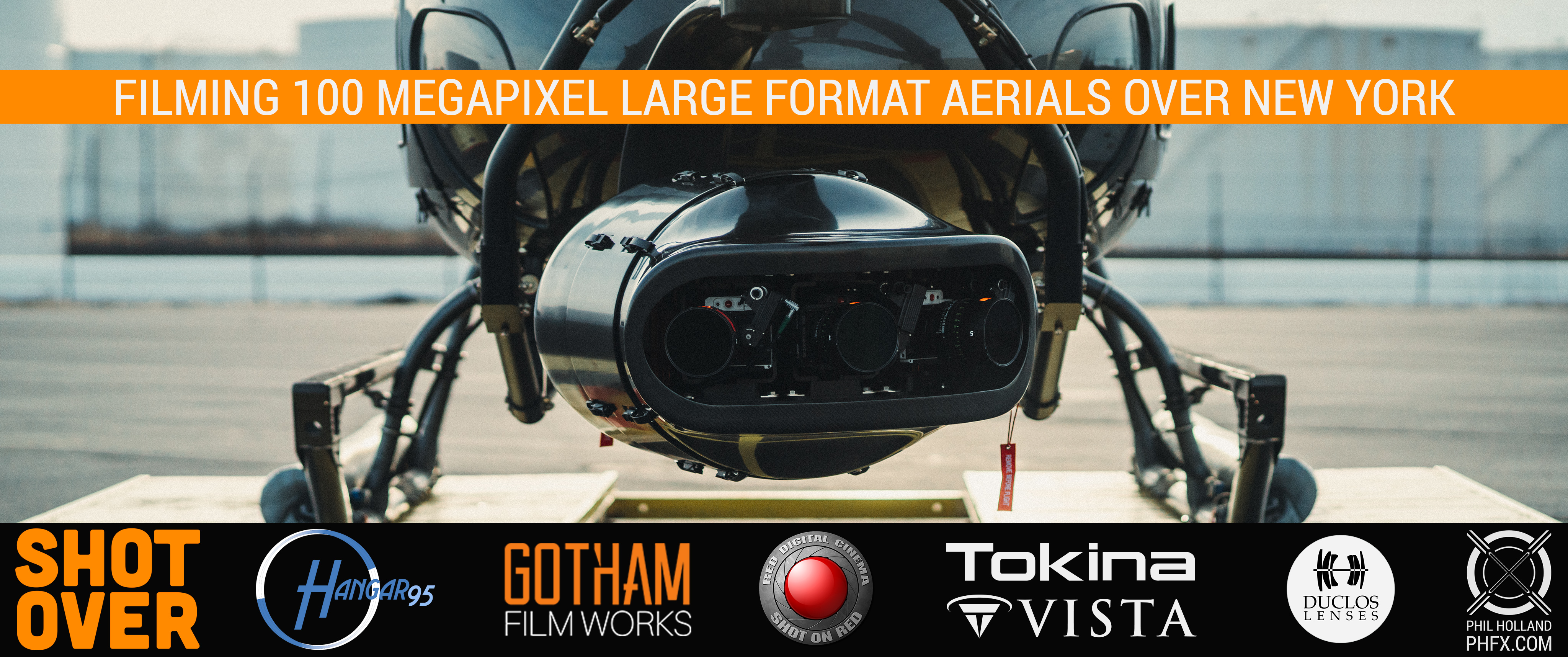 A quick BTS of shooting large format 12K aerials - 02.01.2018My last shoot of 2017 in late December provided a unique opportunity to shoot some very high resolution motion pictures from the sky all over New York. Visually, it is a real treat to see this footage in motion, for now enjoy these 4K frame grabs. Hangar 95 and Gotham Film Works took delivery of the first SHOTOVER K1 Hammerhead 6-axis gyro stabilized gimbal which allows for cameras to be lined up and used in a panoramic array and I think were all very excited for it's maiden voyage over NYC.
A quick BTS of shooting large format 12K aerials - 02.01.2018My last shoot of 2017 in late December provided a unique opportunity to shoot some very high resolution motion pictures from the sky all over New York. Visually, it is a real treat to see this footage in motion, for now enjoy these 4K frame grabs. Hangar 95 and Gotham Film Works took delivery of the first SHOTOVER K1 Hammerhead 6-axis gyro stabilized gimbal which allows for cameras to be lined up and used in a panoramic array and I think were all very excited for it's maiden voyage over NYC.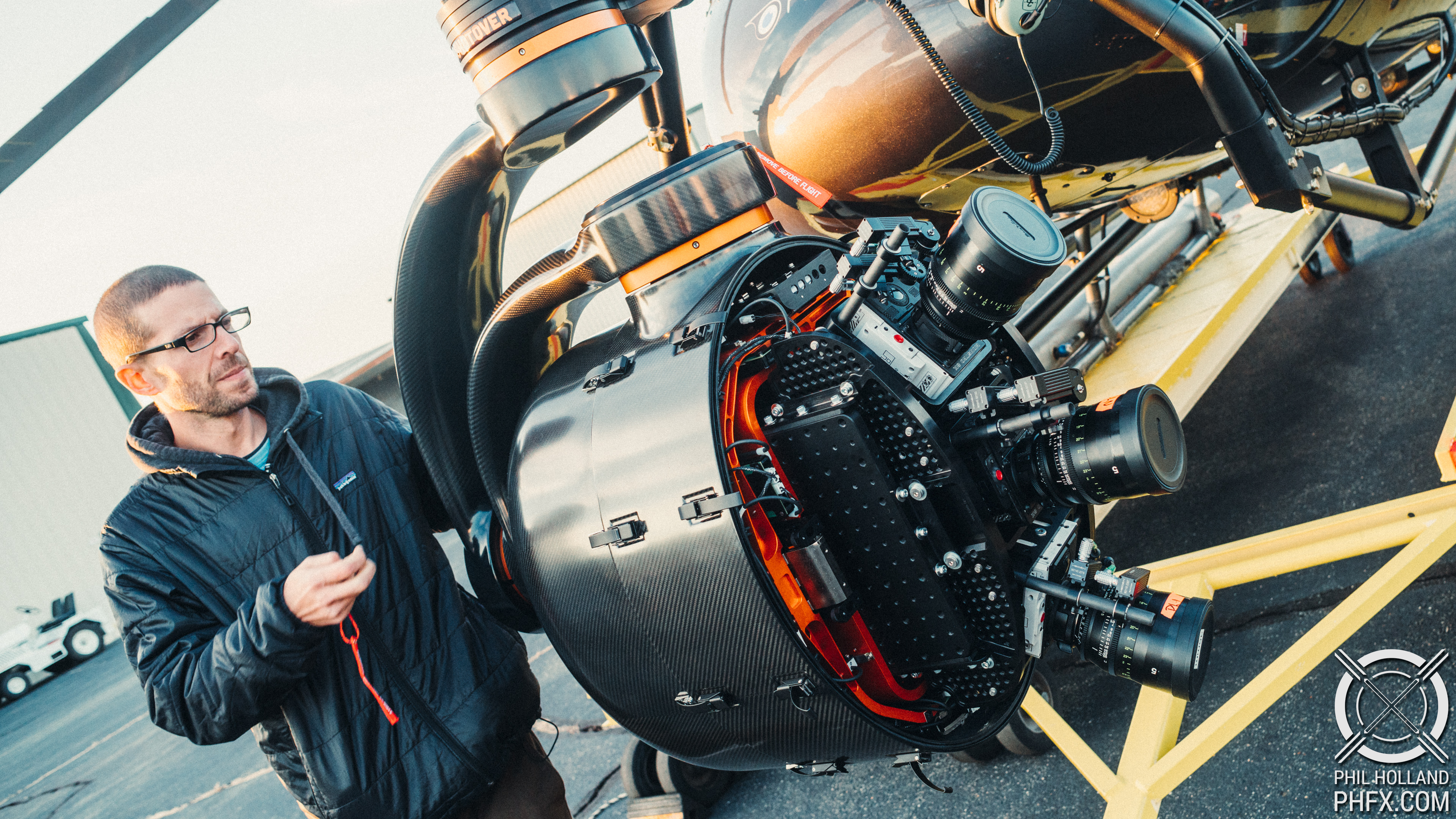 Shotover's NA Service and Support Manager JP de Lespinois pulling the pin before the first flight of the K1 Hammerhead.Camera Selection
Shotover's NA Service and Support Manager JP de Lespinois pulling the pin before the first flight of the K1 Hammerhead.Camera Selection
Camera choice was an interesting one as you can go a few directions here. Prior to this I have been filming 8K VistaVision aerials for about 2 years. It's been my go to larger format for long form aerial work and producing amazing results. Turning this large format concept up a notch by have 3X 8K VVs in the K1 Hammerhead seemed like a pretty logical and somewhat jaw dropping choice. RED released the Weapon 8K VV Monstro camera right around this time. And there were were doing another first, putting 3X 8K VVs on their side and using them for the first time in a panorama array setup to create a very high resolution and large format system. On a creative level I knew this was going to be good, Monstro's strengths come in the form of great color, dynamic range, and very clean shadows. Which would work great for low light and night.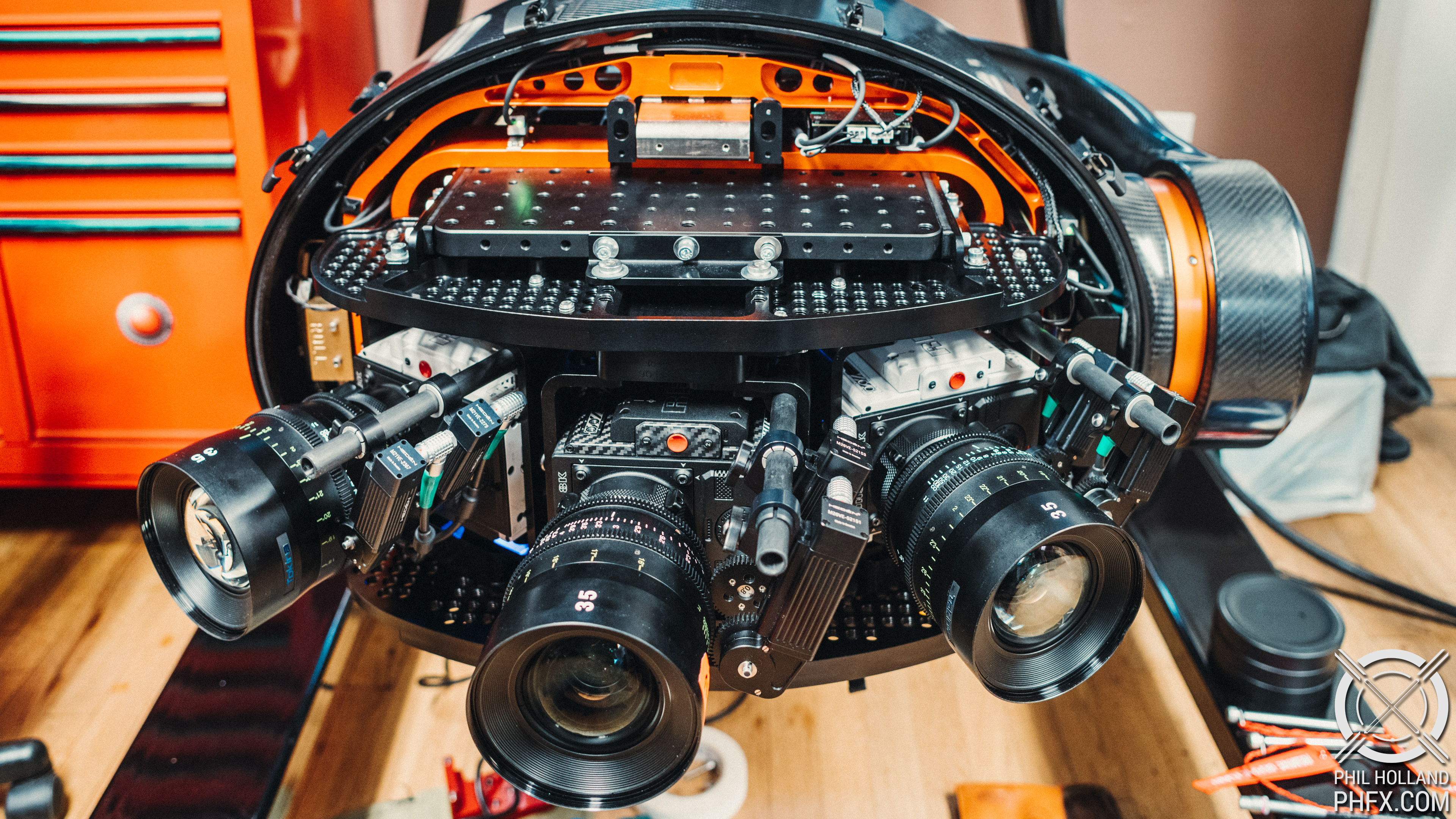 All 3X of the RED Weapon 8K VV Monstro camera bodies rigged in the SHOTOVER K1 Hammerhead.Lens Selection
All 3X of the RED Weapon 8K VV Monstro camera bodies rigged in the SHOTOVER K1 Hammerhead.Lens Selection
Lens selection was a quick decision for me. I knew we were shooting night and day, so having fast primes would be ideal. Tokina released the first proper set of cinema-class primes for RED's 8K VV format some time ago and I've been using them a lot since their release. Their clean performance at T1.5 maximum aperture would be ideal for night and since their image circle is generous we can use things like screw on ND filters without any visible vignette or coverage issues. Also, since they don't breath during focusing stitching would be an easier task when adjusting focus from the eye. For this shoot I decided on three 35mm primes, my personal goal was to shoot wide vistas and get as close as safely possible to our subject matter to emphasize the resulting large format we'd be filming. The Tokina Cinema Vista Primes rigged and ready with screw on ND filters securely tapped before flight.Some Quick Rigging Notes
The Tokina Cinema Vista Primes rigged and ready with screw on ND filters securely tapped before flight.Some Quick Rigging Notes
On a technical level there's a lot that needs to happen in terms of proper spacing, finding the zero parallax point, lens selection, determining your overlap, rigging, payload balancing, etc.... I won't dive too deep into this, but I'll talk about a few things that worked well. Every RED Weapon 8K VV Monstro has a JETPACK SDI Module attached to sync genlock, provide power, control the camera, etc. This is actually one of the first times I've ever seen this bad boy used to maximum intent. WIthout this module something like this would be very difficult to pull off. To create a quality stitch with pixel and frame accuracy it's key to have genlock. During the rigging, especially since this was the first time setting up this rig, digging into the camera settings via WiFi and FoolControl was very useful, however, once cameras were slaved and synced properly it was a matter of controlling just the master brain. There was a bit of experimentation with our overlap which once locked led to the final balance and tuning of the KI Hammerhead.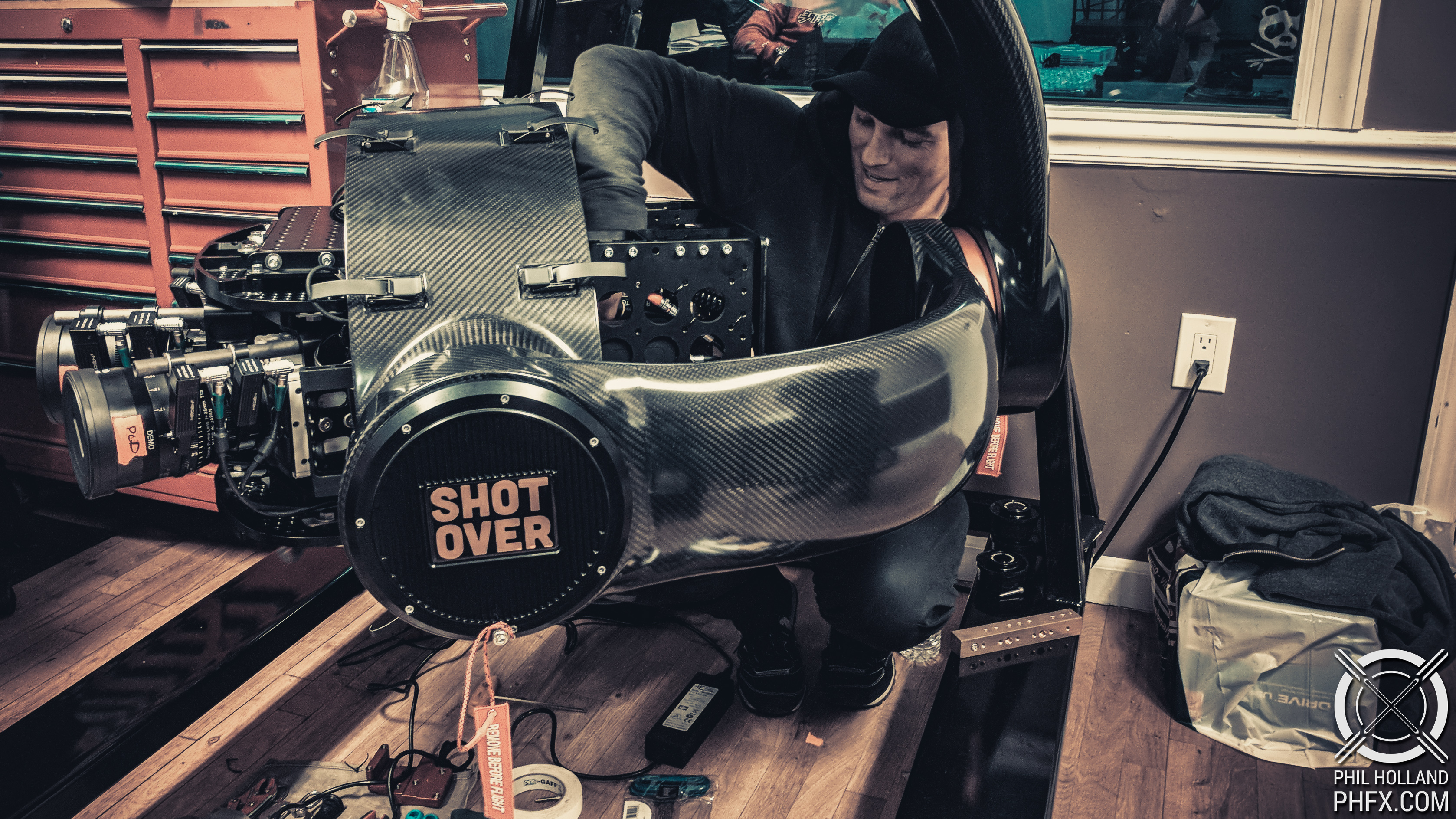 Nick Sprague, SHOTOVER's Lead NA Service and Support Technician, applying counterweights to the K1 Hammerhead.
Nick Sprague, SHOTOVER's Lead NA Service and Support Technician, applying counterweights to the K1 Hammerhead.
Once everything was rigged and tested out it was time to get up in the air and get to shooting. Mounted to the SHOTOVER Controller we had 3X SmallHD displays placed in vertical orientation. I had a few moments on the ground to do some test stitches, but visually seeing the wide image for the first time was exciting and certainly a new way to look at New York. The trio of SmallHD displays showing exactly how wide we were shooting.Image Workflow
The trio of SmallHD displays showing exactly how wide we were shooting.Image Workflow
So what did our exact setup actually produce? Well with the 3X 8K VV sensors and the absolute thinnest overlap I would recommend we were capturing 12x8K images, approximately 100 megapixels. The approximate image plane was about 60x40mm, which means this was pretty close to shooting 48 frames per second with a 645 200 Still Camera. Additionally with our lens setup using the 3X 35mm Tokina Cinema Vista Primes we netted a horizontal field of view of around 103 degrees, which would be approximately the equivalent of a 10mm prime on Super 35mm. Below is an overview of how I'm choosing to work with the footage.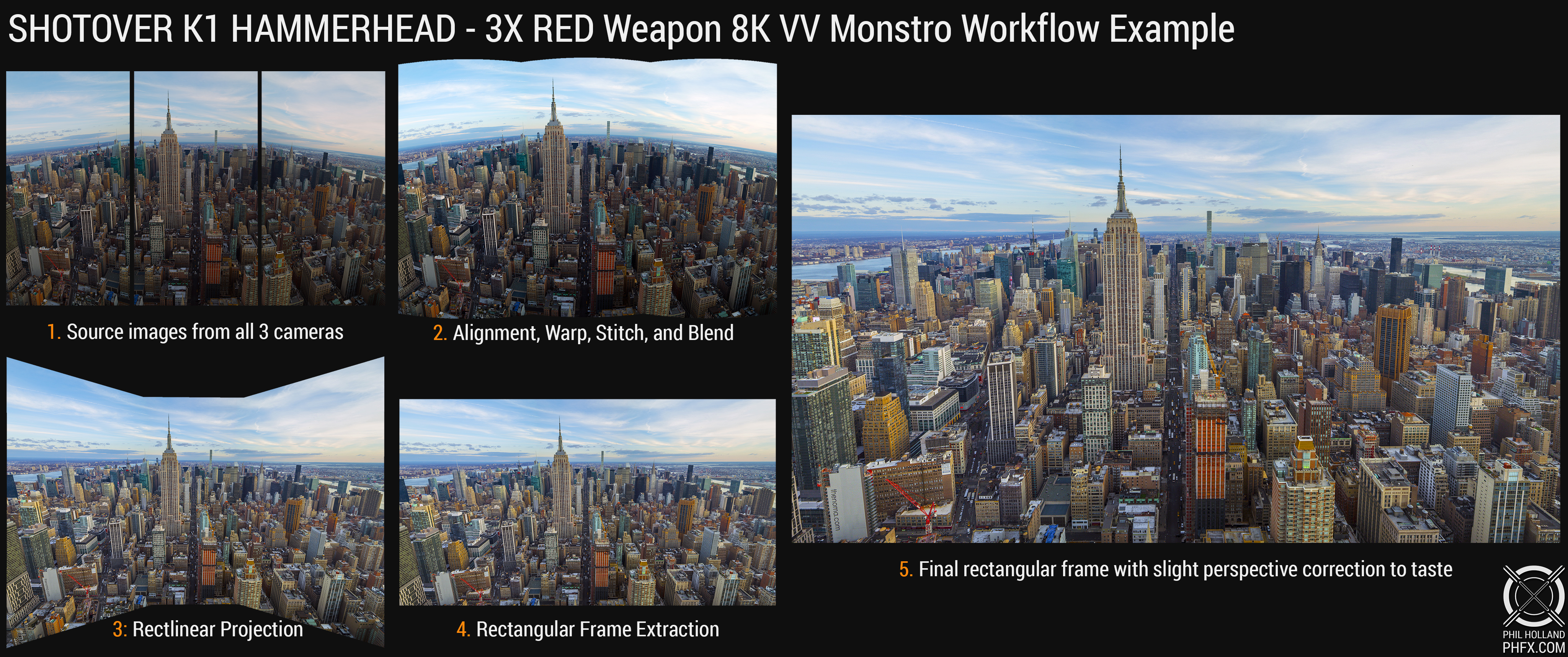 An example of how I've chosen to work with this footage to create a normal rectilinear image.Stitching camera arrays is sort of a technical art form as you battle all sorts of things related to camera position and optics. But there's a lot of power behind having this much captured resolution and detail. Above is the general workflow I ran through. Selecting a take and extracting Left, Middle, and Right cameras angles I experimented with a few different ways to stitch the motion, but I always targeted a Equirectangular Projection first and chose to change the projection to rectilinear (like a normal spherical lens) and crop into a standard DCI 1.9:1 Aspect Ratio. In this case the format would be considered DCI 12K. My main reasons for this is at the moment there is no 12K display, but having a solid 12K to 8K down sample is highly alluring with this particular array configuration. Interestingly you can extract a very IMAX friendly image from this setup as well with an appealing FOV and resolution for proper IMAX screens. One other note, especially since 8K cameras have hit the scene I've been experimenting a lot with perspective correction to provide an even more unique perspective on aerials especially in cities with buildings, we can generate very high quality results because we have so much resolution at our disposal.
An example of how I've chosen to work with this footage to create a normal rectilinear image.Stitching camera arrays is sort of a technical art form as you battle all sorts of things related to camera position and optics. But there's a lot of power behind having this much captured resolution and detail. Above is the general workflow I ran through. Selecting a take and extracting Left, Middle, and Right cameras angles I experimented with a few different ways to stitch the motion, but I always targeted a Equirectangular Projection first and chose to change the projection to rectilinear (like a normal spherical lens) and crop into a standard DCI 1.9:1 Aspect Ratio. In this case the format would be considered DCI 12K. My main reasons for this is at the moment there is no 12K display, but having a solid 12K to 8K down sample is highly alluring with this particular array configuration. Interestingly you can extract a very IMAX friendly image from this setup as well with an appealing FOV and resolution for proper IMAX screens. One other note, especially since 8K cameras have hit the scene I've been experimenting a lot with perspective correction to provide an even more unique perspective on aerials especially in cities with buildings, we can generate very high quality results because we have so much resolution at our disposal.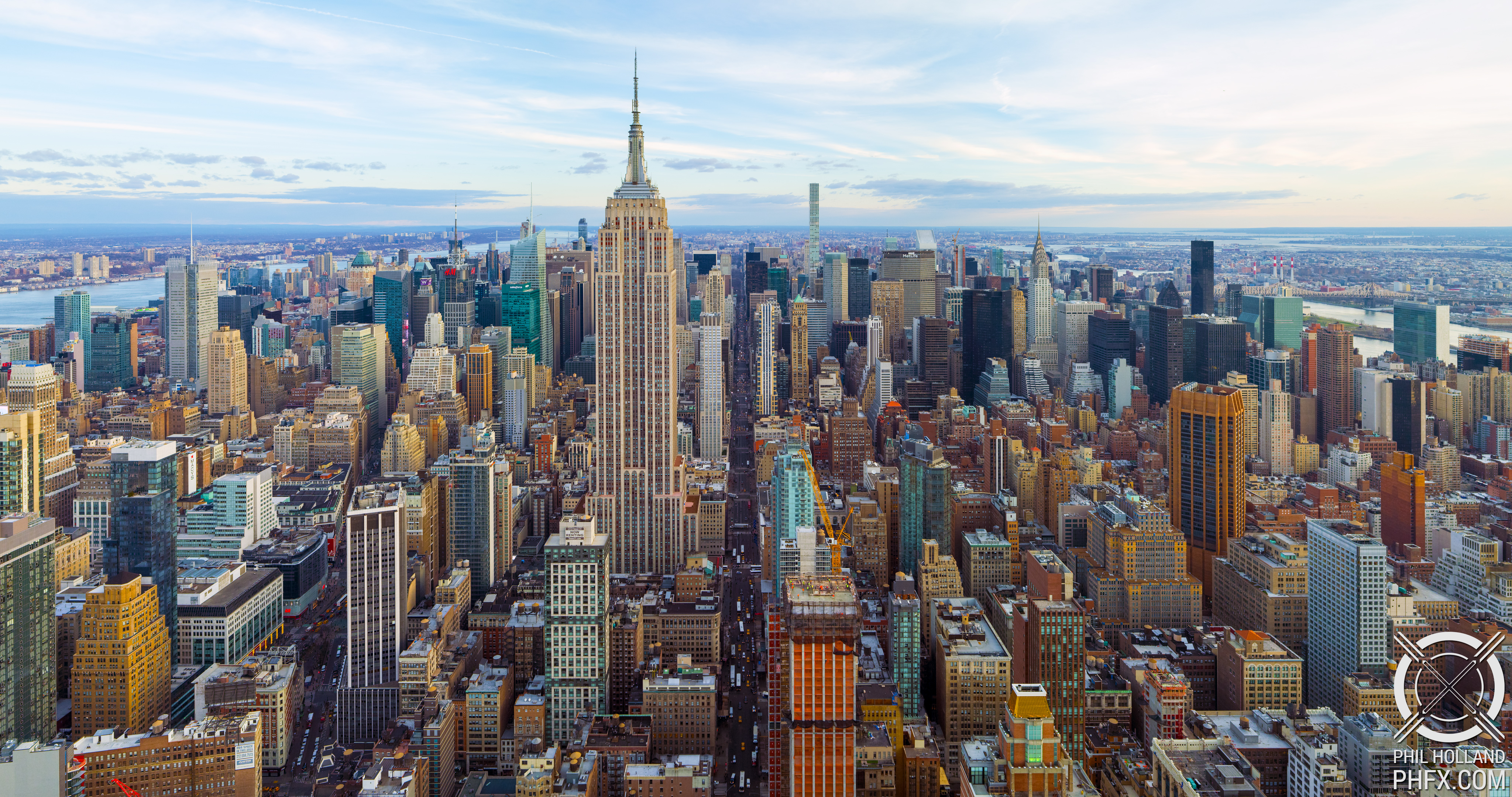 An example of a shot with perspective correction.Frame Grab Gallery
An example of a shot with perspective correction.Frame Grab Gallery
From here I'd like to share a few of our results, below are 4K frame grabs from one of our flights. We shot everything at overcranked 48fps and every shot I finished out to DCI 12K aspect ratio (it's not a standard format... yet), but with the intention to scale down to 8K, 4K, etc. The whole combination of 3X RED Weapon Monstro 8K VV cameras in the K1 Hammerhead produced a stunning level of captured detail and the resulting very large format provides a level of depth that's rather mesmerizing, especially in motion. If you'd like to save these and look at them full screen, feel free to do so.
Thank You and High Fives
It took a great deal of teamwork, collaboration, sharp minds, and expertise to get up and rolling in the NYC skies with this rig. I'd like to thank Tim of Hangar 95 and Jose from Gotham Film Works for putting together something special on the east coast when it comes to aerial filming services and gear. Thanks go to Chris our pilot, shooting long runs isn't easy and he nailed our lines. Brad, J.P., and Nick from SHOTOVER and continuing to push the boundaries of what we can do with gimbals from the ground and air. Big thanks to RED Digital Cinema for the support on the other RED Weapon 8K VVMonstro cameras, getting a few of them at the same place and same time was certainly not and easy task near the holidays. Also massive thanks to Tokina, Ryan Avery, and Duclos Lenses for providing lens support. Last but not least, thanks to Mike Isler's sharp mind throughout rigging. I imagine we could nerd out for a loooooong time. I'm very much looking forward to the next time we get a chance to put this rig to use in the future.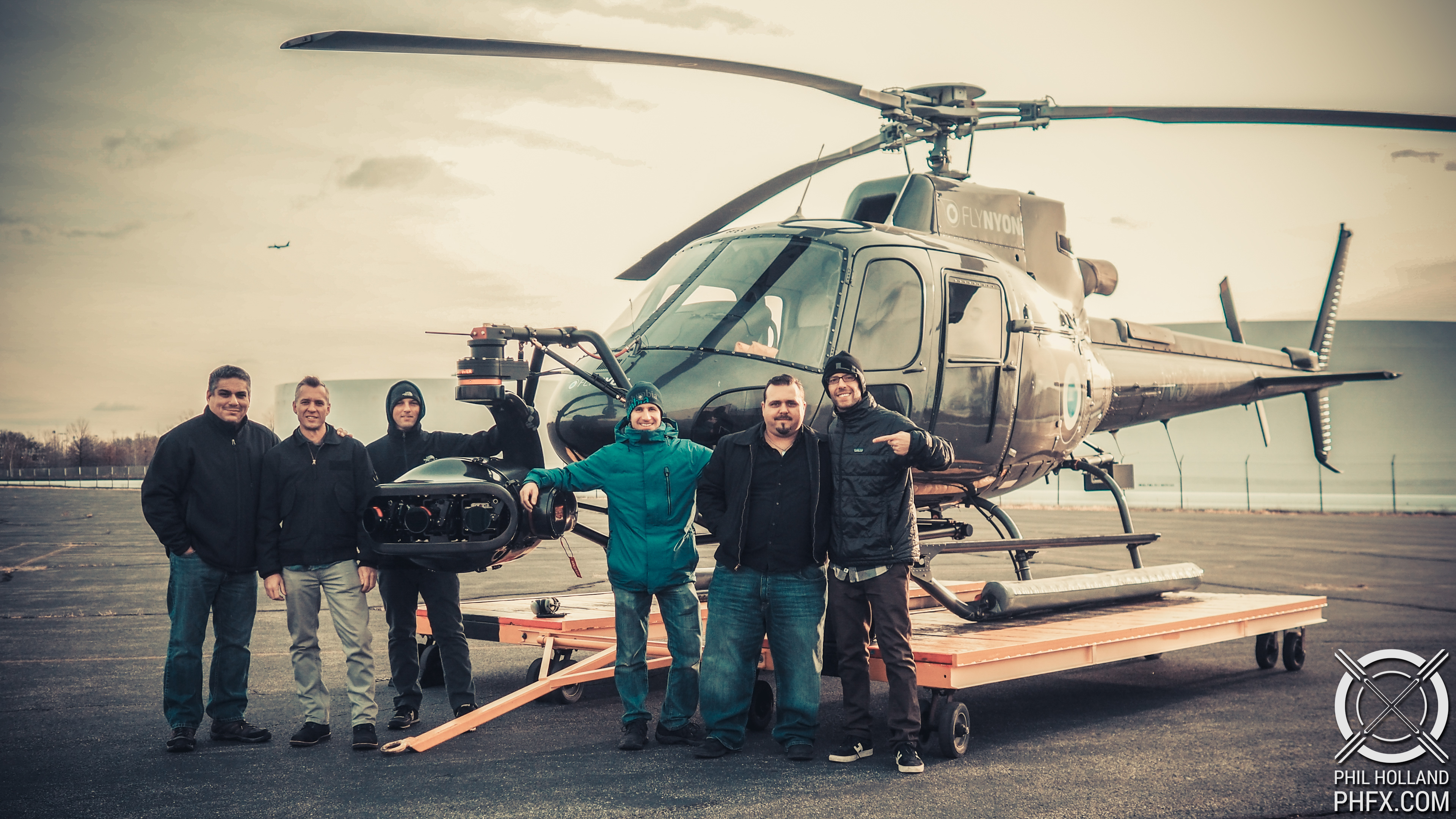 Our crew on a brisk NY Morning after our last flight.
Our crew on a brisk NY Morning after our last flight.